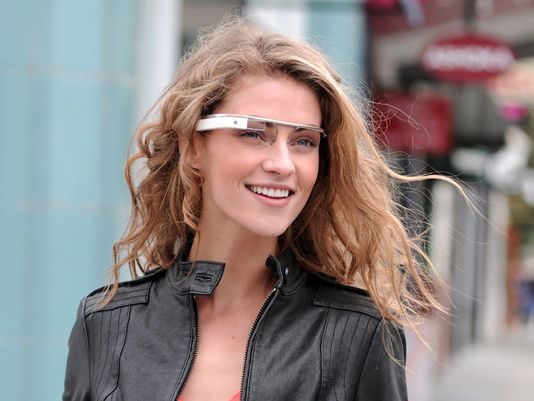Ah yes, Google Glass, introduced as the future of personal computing as the first wearable piece of technology to integrate the online world and the physical world. As geeky as this piece of eyewear looks (oh Scoble!), its introduction into the marketplace lends itself to a much broader discussion about what capabilities these technologies hold, and how human existence and computer intelligence will walk hand-in-hand in the near and distant future.

After the novelty of such a device begins to wear off, we can then examine how Google Glass may fit into the larger strategy down the road by Silicon Valley powerhouse Google. The company, after all, is an advertising company, and one aspect that has received little attention up until now is just how eye-tracking technologies may influence and propel the advertising industry into the next century.
When you cut through the "coolness factor" and media hype, advances in eye-tracking technologies are accelerating at a rapid pace, and will soon make it possible for ads to look right back at you, seeing where you look on a webpage and how long your gaze lingers on a banner or rich media advertisement for, say, Adidas or Starbucks. As the next generation of computers looks into your eyes, our processors will be able to monitor what holds our interest, all to the benefit of advertisers around the globe.
Sound scary? Yes. But we may be a ways off from having this become a reality although recent advancements are headed in this direction.
Eye-tracking technologies, first introduced as a way to assist the blind and disabled, are quickly moving from the lab and into mainstream devices and applications. One company called THiNK Eye Tracking specializes in this area of research to allow a brand to see what their customers are looking at as they read magazines, experience outdoor media or watch television or videos.
"In truth, I think many of the models and methods which underpin the advertising industry are so naive, tired and outmoded, I would welcome a system of analysis based on Tarot readings as at least bringing a little variety into our lives," said THiNK customer Rory Sutherland, Chairman at Ogilvy. "But to see the scientific approach developed by THiNK is especially welcome, and in the agency of David Ogilvy, doubly so."
Samsung recently released its Galaxy S4 complete with "Smart Scroll" and "Smart Pause" features that enable people to move the screen up and down, as well as pause videos, with simple eye movements. While reviews have been mixed, tech companies see this as a trend with longevity, and have amped up investments in eye-tracking R&D to stay ahead of the curve.
Another company called Tobii is set to release a product called REX that connects via USB port to a computer, allow users to control their mouse cursors through eye movements and where they focus their gaze.
Eye-tracking technologies are not only applicable online, they may be introduced at your local mall or big box retailer in the near future. According to a recent New Scientist article, researchers are testing a new product called SideWays that can track what products catch your attention on the shelves in physical retail stores. As soon as you walk up to an item, the device automatically starts tracking what you peer at -- which could allow shop owners to retarget you online or show you advertisements on a video screen for products you seem interested in.
"SideWays uses a conventional video camera and a computer vision program the team developed, which finds your pupils by recognizing the corners of your eyes and where they sit relative to your face," according to the article. "The process only causes a short delay, after which it begins tracking your gaze."
The introduction of new eye-focused input points is not something to be so concerned about. But it's these technologies, coupled with the vast array of big data sets, that may soon capture information not only about your online shopping habits and behaviors, but what data it can infer about your interests and intent to purchase.
For now, Google Glass hasn't yet found a firm foothold, but it certainly opens the door for the introduction of more gaze-focused tracking technologies. Be warned: When you put a pair of these glasses on your gaze may be revealing more about you than you may realize -- and advertisers will soon pay a hefty premium to gain access your eyes.
